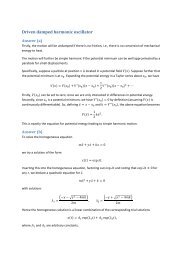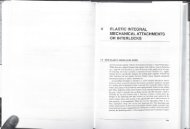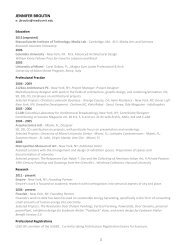Snap-Fit Joints for Plastics - A Design Guide - MIT
Snap-Fit Joints for Plastics - A Design Guide - MIT
Snap-Fit Joints for Plastics - A Design Guide - MIT
You also want an ePaper? Increase the reach of your titles
YUMPU automatically turns print PDFs into web optimized ePapers that Google loves.
Cantilever <strong>Snap</strong> <strong>Joints</strong> B<br />
16<br />
The figures depend on the relative speed of the<br />
mating parts, the pressure applied and on the<br />
surface quality. Friction between two different<br />
plastic materials gives values equal to or<br />
slightly below those shown in Table 3. With<br />
two components of the same plastic material,<br />
the friction coefficient is generally higher.<br />
Where the factor is known, it has been indicated<br />
in parentheses.<br />
PTFE 0.12-0.22<br />
PE rigid 0.20-0.25 (x 2.0)<br />
PP 0.25-0.30 (x 1.5)<br />
POM 0.20-0.35 (x 1.5)<br />
PA 0.30-0.40 (x 1.5)<br />
PBT 0.35-0.40<br />
PS 0.40-0.50 (x 1.2)<br />
SAN 0.45-0.55<br />
PC 0.45-0.55 (x 1.2)<br />
PMMA 0.50-0.60 (x 1.2)<br />
ABS 0.50-0.65 (x 1.2)<br />
PE flexible 0.55-0.60 (x 1.2)<br />
PVC 0.55-0.60 (x 1.0)<br />
Table 3: Friction coefficient, µ.<br />
(<strong>Guide</strong> data from literature <strong>for</strong> the coefficients<br />
of friction of plastics on steel.)<br />
Page 15 of 26 <strong>Snap</strong>-<strong>Fit</strong> <strong>Joints</strong> <strong>for</strong> <strong>Plastics</strong> - A <strong>Design</strong> <strong>Guide</strong>





